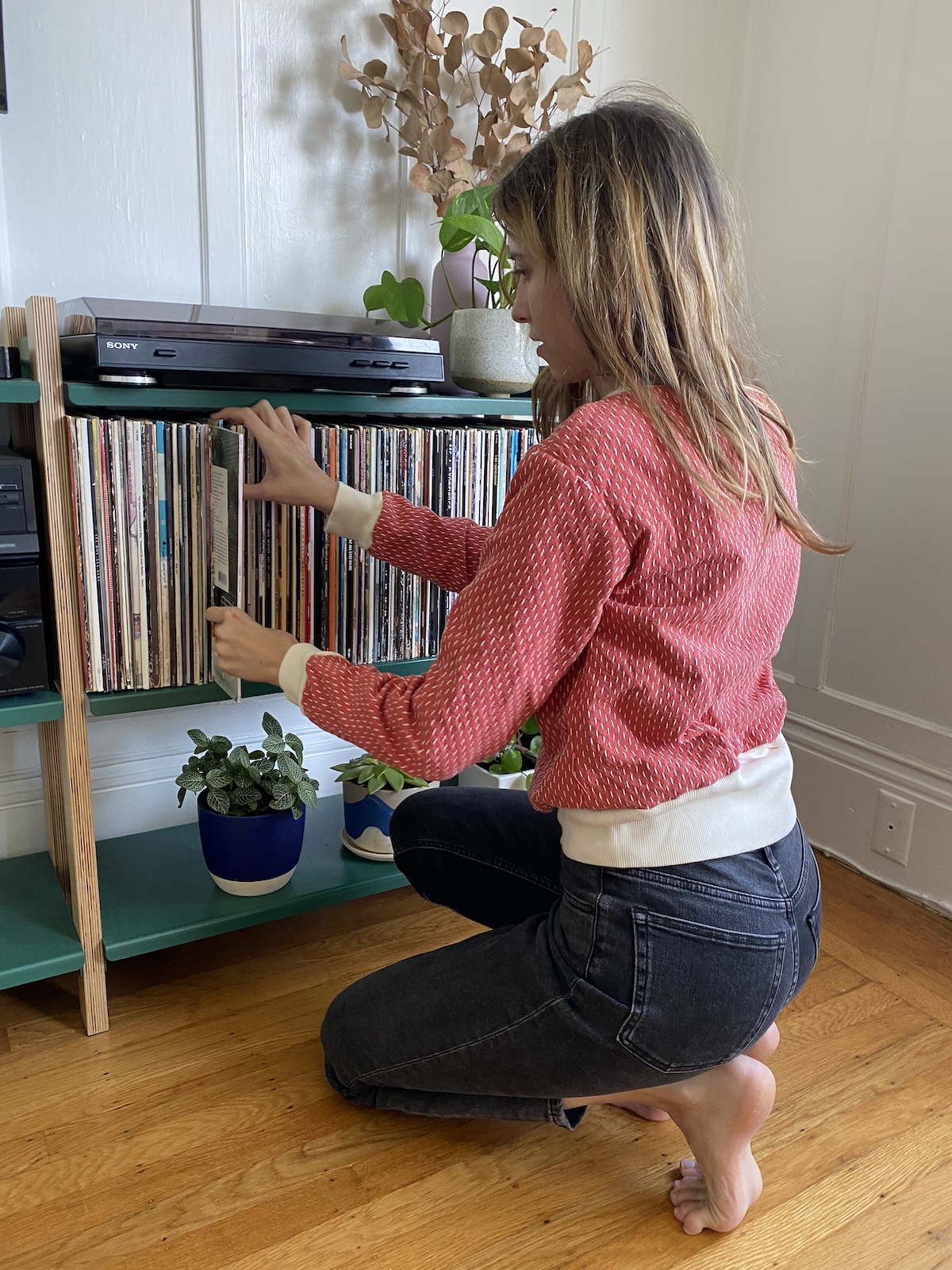
It’s been 8 weeks of shelter in place here in California and I’ve finally made some loungewear. I try really hard to get dressed up for work each day because it helps me retain a sense of normalcy. But there are definitely times when I just want to wear sweats all day, so it was time to make some comfortable clothes that still look professional on zoom calls. I decided to make two versions of the Assembly Line patterns cuff sweater. It’s a really unique pattern because it’s a sweatshirt style top but made with woven fabric, as opposed to knit.

Pattern and sizing
This was my first time making a pattern from Assembly Line patterns, so I went into it unsure of how the pattern would be sized and if the drafting would be quality. Overall, I found the pattern to be really high quality. The directions were clear and the pattern booklet has multiple pages of sewing tips for making the top. I personally love when patterns include extra details like this because it helps for future makes as well.
In terms of sizing, this sweater is more oversized than I would typically wear. I made the XS, my measurements are 32/26/35, and the ribbing doesn’t fit tight to my hips like I would want. The arms of the sweater are also too long on me. I’m 5’8” and have long arms so it seems like this must be intentionally part of the style. Either that or this pattern is designed for very tall people with long arms.

Honestly, if i were to make it again I think I would try to shorten the sleeves and grade the fit down a bit. But if you like your sweatshirts a bit oversized, I don’t think you’ll have a problem. The next time that I make a pattern by Assembly Line I will probably make a muslin, as I’m unsure if the oversized fit is part of this style or the brands general fit model.
The fabrics
My favorite part about this pattern is that it mixes knits and wovens. The main bodice is woven, and then the cuffs are knit ribbing. You probably could use a stiffer, low-stretch knit and achieve the same look, but at that point you might as well make the Grainline Linden sweatshirt instead. I always find myself more attracted to the feel and the print selection in woven fabrics, and was excited about the idea of making a woven sweatshirt.

For my first version I used a pink French Sashiko fabric and for my second I used a cream linen rayon blend. Both choices are thick and cozy, so they make a great sweater. You could go with a more lightweight fabric, but I would keep in might how the weight of it will contrast with the weight of the ribbing. The Sashiko fabric is thicker than the linen and I think it blended a bit nicer with the ribbing. However, I really like how the linen blend gets crinkly, and it looks intentional when I don’t iron it 🙂
Sewing a woven sweater with knit cuffs
This pattern overall is super easy and I didn’t run into any major construction issues. If you’ve made a sweatshirt before, I think you’ll find the construction very similar and won’t run into issues.

If you’re newer to sewing, the difficult part may be sewing the cuffs on the sleeves, neck, and bottom. The cuff pieces are smaller than the neckline/sleeve/bottom and will have to be stretched as you sew. This allows them to lay flat but still stretch to fit over your head.
Ideally you will want your cuffs stretched evenly as you sew. To achieve this, I find it easiest to split the cuff into four quadrants. Once the cuff is sewn into a circle, lay it flat on the table with the seamline on top and about centered. Mark directly below the seamline – this will be the front – and mark the two sides. These markers divide the cuff into four quadrants.

Then you can do the same on your neckline/sleeve piece, leaving four similar marks. Pin the cuff to the sleeve using those 3 tick marks (and the seamlines) as guides.

You’ll notice that you have to stretch the cuff a fair amount to get it to fit, and that is intentional. For this pattern the waistband cuff pattern piece has pattern notches for matching front and back, so you will only need this method on the neckline and sleeves. My method is more of a time-saving-hack than a science, if you prefer things perfect I recommend this blog post about sewing cuffs to wovens.
Final thoughts

If you’ve had your eye on a cozy woven fabric but haven’t been sure what to make, this could be for you. I would definitely recommend taking a good look at the size chart and finished garment measurements, especially if you’re picky about fit. Despite this pattern being more oversized than my liking, the sweaters are so comfortable that I end up wearing them all the time! It’s perfect for my quarantine wardrobe – which is now just a mix of LB Pullovers, Grainline Lindens, and Cuff Sweaters.

